Two masses as shown in figure. Are released from their positions. Calculate the velocity with which the mass of 5kg touches the surface if its initial heigth from the surface is 4m. Also, show that the gain in KE of the system is equal to loss in its P.E. Take g=10ms−2.
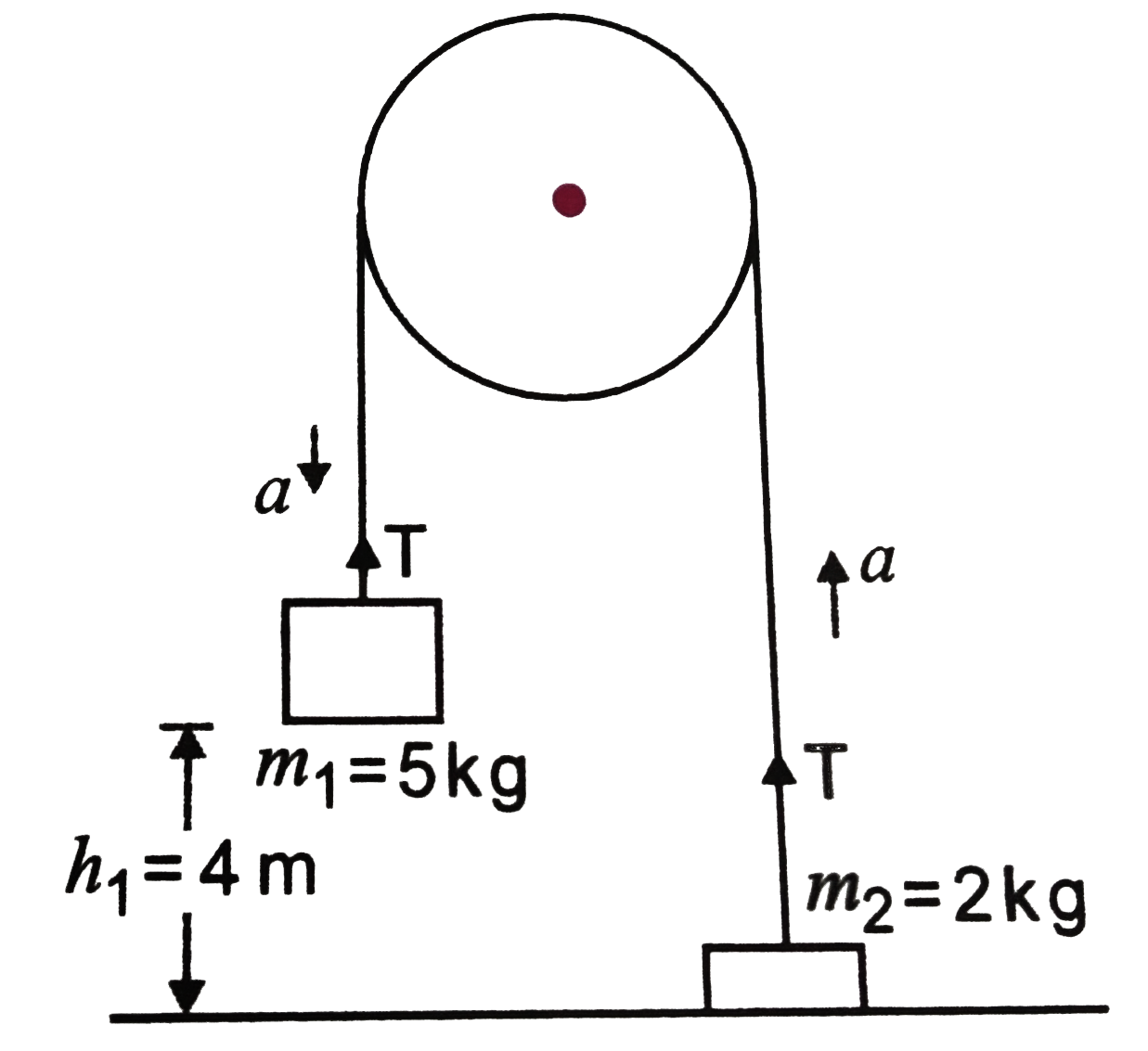
Here, m1=5kg,m2=2kg,
g=10ms−2
Acceleration of the system,
a=(m1−m2)gm1+m2=(5−2)×105+2=4.28m/s2
Velocity with which 5kg mass touches the ground (v) is obtained from
v2−u2=2as
v2−0=2×4.28×4
v=√2×4.28×4=5.85ms−1
Initially, both the masses are at rest
∴ Inital KE of the system =0
Final K.E. of the system =12(m1+m2)v2
=12(5+2)(5.85)2=119.8J
Gain in K.E. =119.8−0=119.8J
Initial P.E. of the system m1gh1+m2gh2
=0+2×10×4=80J
Loss in P.E. =200−80=120J
Thus , Gain in K.E. = Loss in P.E.
Topper's Solved these Questions
- WORK, ENERGY AND POWERBook:PRADEEPChapter:WORK, ENERGY AND POWERExercise:Conceptual Problems
Explore 27 Videos
- WORK, ENERGY AND POWERBook:PRADEEPChapter:WORK, ENERGY AND POWERExercise:Very Short Anwer Question.
Explore 54 Videos
- WORK, ENERGY AND POWERBook:PRADEEPChapter:WORK, ENERGY AND POWERExercise:Curiosity questions
Explore 2 Videos
- THERMODYNAMICSBook:PRADEEPChapter:THERMODYNAMICSExercise:Assertion- Reason Type Questions
Explore 19 Videos
Similar Questions
Knowledge Check
Two unequal masses are connected on two sides of a light and smooth pulley as shown in figure. The system is released from rest. The larger mass is stopped 1.0 second after the system is set into motion and then released immediately. The time elapsed before the string is tight again is: Take g=10m/s2
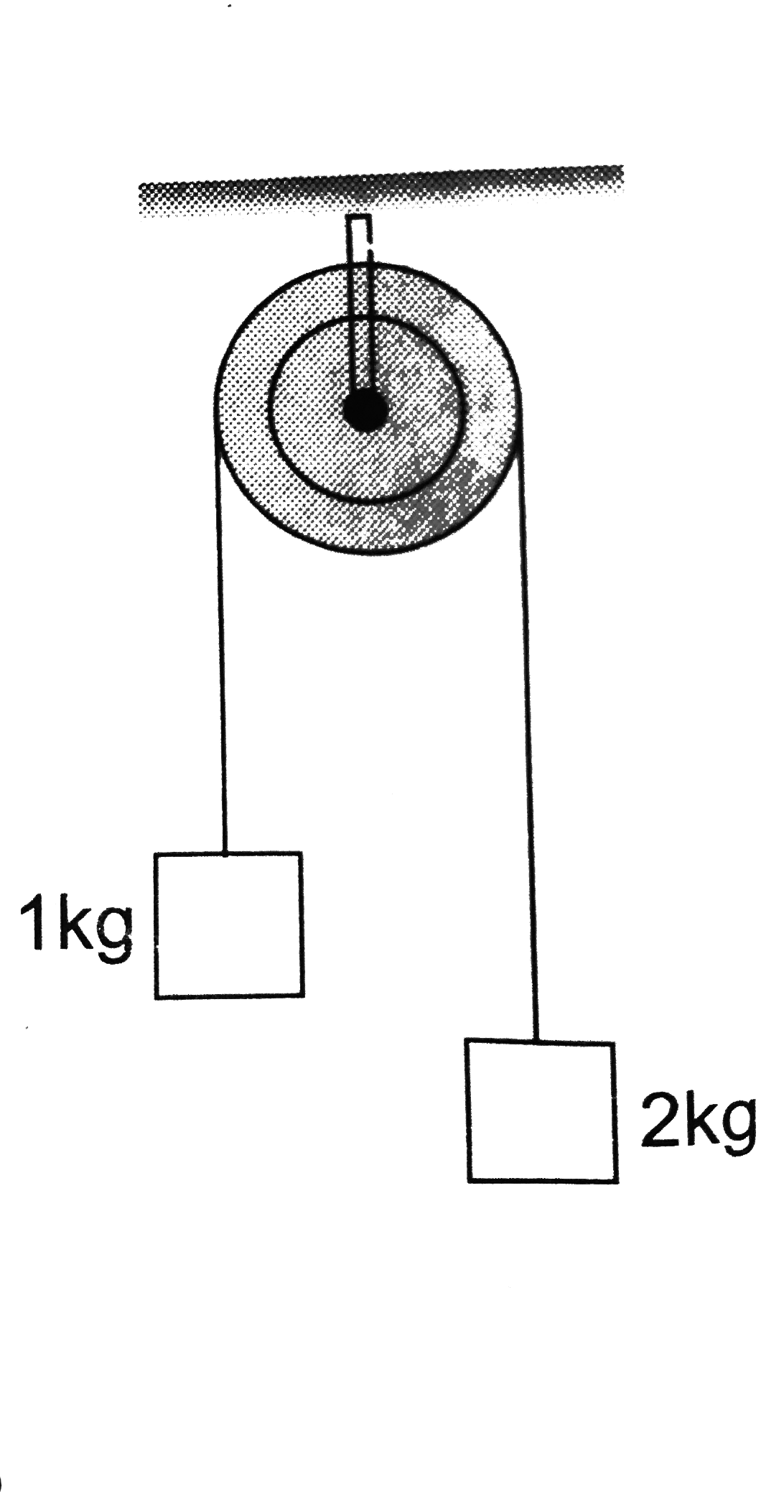 A1/4sB1/2sC2/3sD1/3s
A1/4sB1/2sC2/3sD1/3sA trolley of mass 20 kg is attached to a block of mass 4kg by massless string passing over a frictionless pulley as shown in the figure. If the coefficient of kinetic friction between trolley and the surface is 0.02, then the acceleration of the trolley and block system is (Takeg=10ms−2)
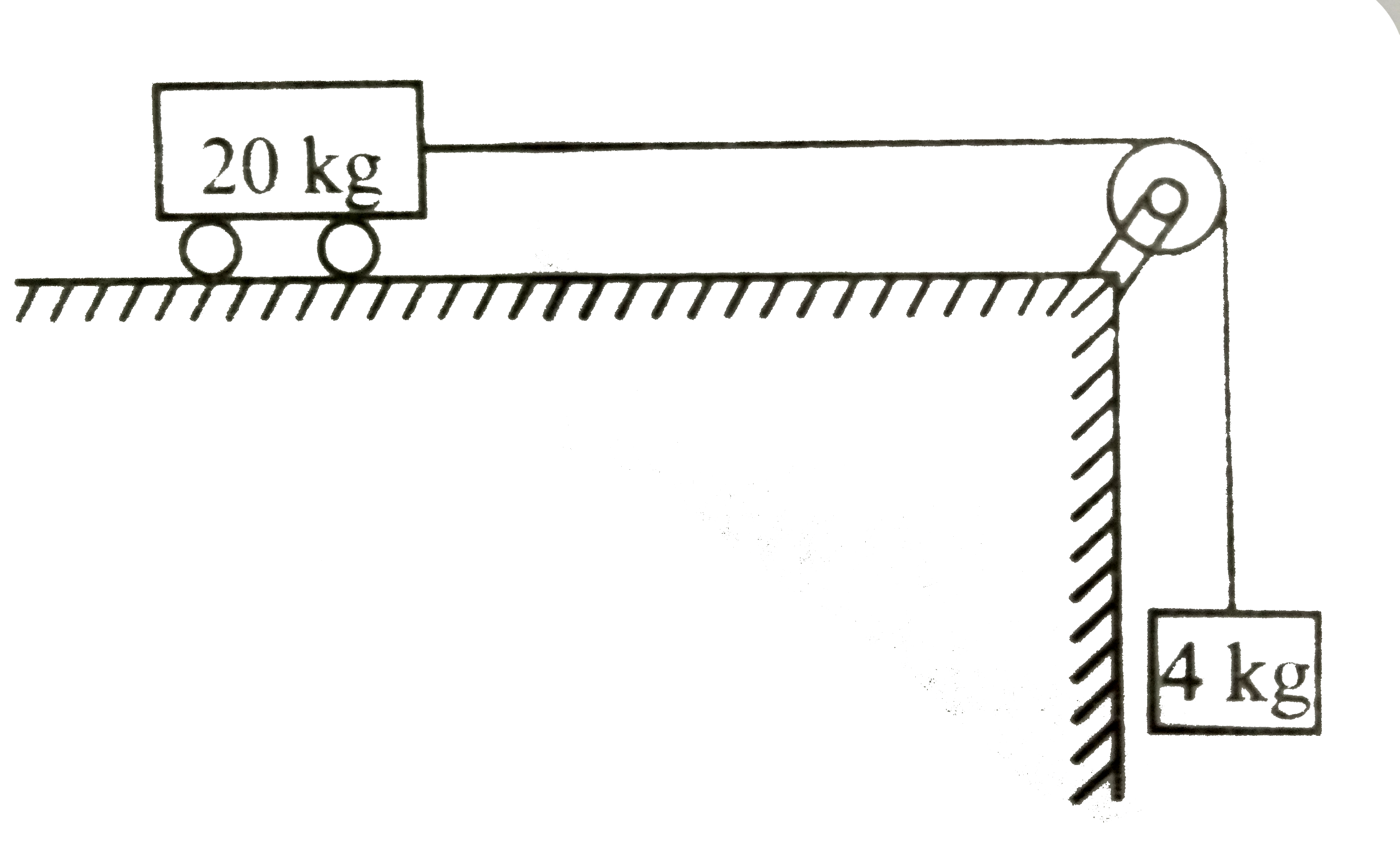 A1ms−2B2ms−2C1.5ms−2D2.5ms−2
A1ms−2B2ms−2C1.5ms−2D2.5ms−2Three masses of 1 kg, 6 kg and 3 kg are connected to each other with threads and are placed on a table as shown in figure. What is the accelration with which the system is moving? Take g=10ms−2:
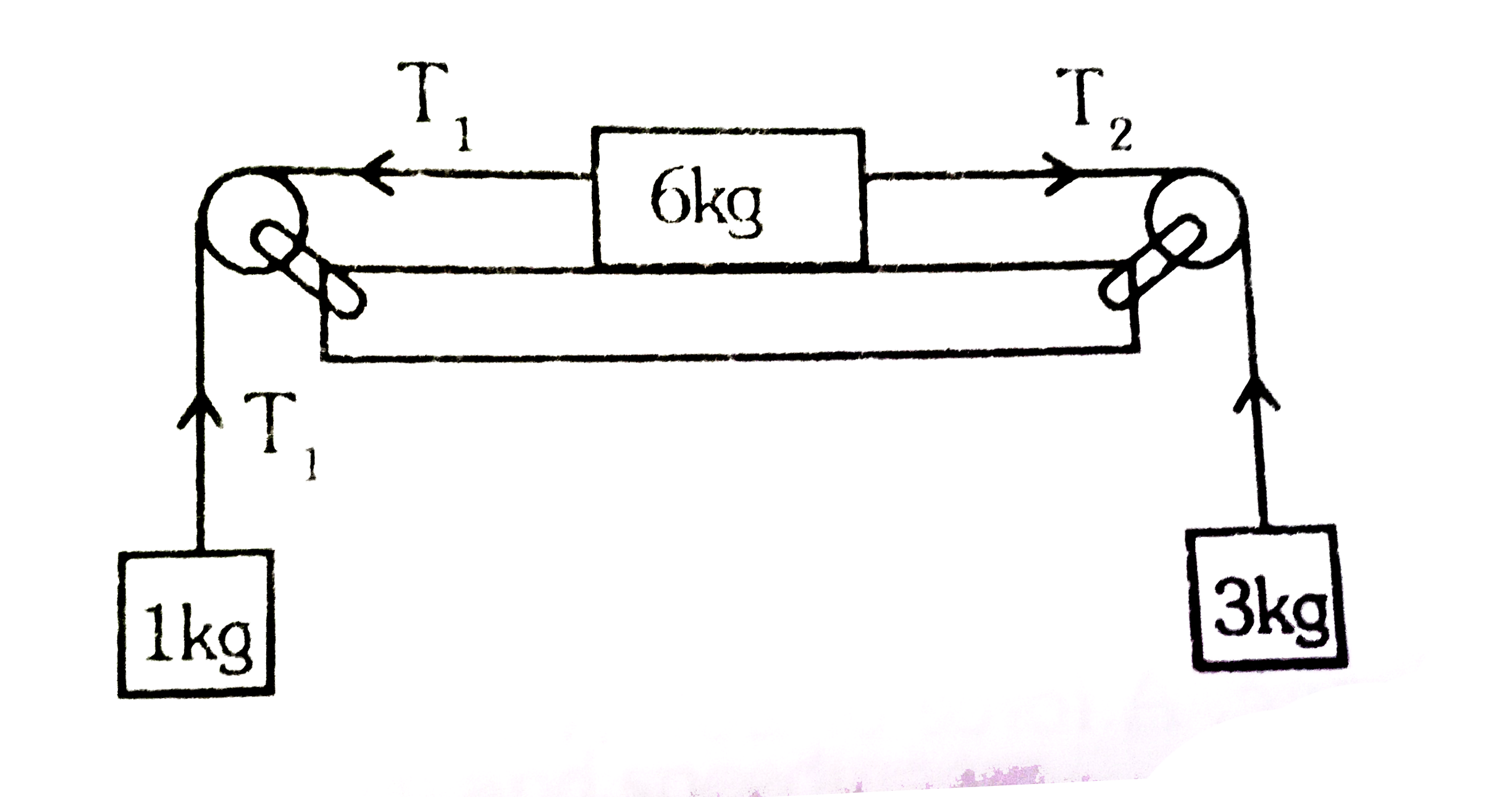 AZeroB2ms−2C4ms−2D3ms−2
AZeroB2ms−2C4ms−2D3ms−2
In the system shown in figure, mass m is released from rest from position A. Potential energy of m at point A with respect to point B is E. Volume of m is negligible and all surfaces are smooth. When mass m reaches at point B.

View SolutionA small ball of mass m is released from rest from the position shown . All contact surface are smooth . The speed of the ball when it reaches its lowest position is
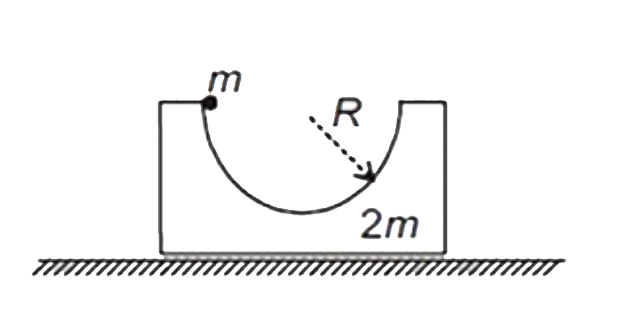
View SolutionAraindrop of mass 1 . 00 g falling from a height of 1 km hits the ground with a speed of 50 ms−1 . Calculate
(a) the loss of the drop .
(b) the gain in K.E of the drop
(c ) Is the gain in K.E equal to loss of P.E ? If not why ? Take g=10ms−2 .
View SolutionA 1 kg mass on a floor is connected to a 2 kg mass by a string passing over a pulley. Obtain the speed of masses (after they are released), when the 2 kg mass just touches the floor. Establish that the gain in kinetic energy of the system equals the loss in its potential energy. The 2 kg mass is initially at a height of 3 m above the ground. Take g=9.8ms−2.
View SolutionIn the system shown in figure, mass m is released from rest from position A. Suppose potential energy of m at point A with respect to point B is E. Dimensions of m negligible and all surfaces are smooth. When mass reaches at point B.

View Solution


